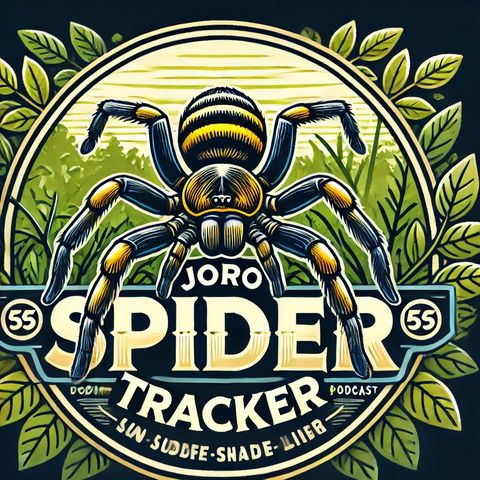Joro Spider Invasion: Exploring the Expansive Reach and Ecological Impact of this Remarkable Arachnid

Sign up for free
Listen to this episode and many more. Enjoy the best podcasts on Spreaker!
Download and listen anywhere
Download your favorite episodes and enjoy them, wherever you are! Sign up or log in now to access offline listening.
Description
The Joro spider, scientifically known as Trichonephila clavata, is a striking species of the orb-weaver spider native to East Asia, particularly Japan, Korea, China, and Taiwan. Over the past decade,...
show moreThe Joro spider is easily recognizable by its vivid coloration and large size. Adult females, which are considerably larger than males, can measure up to three inches in leg span. Their bodies are primarily a bright yellow and black, with distinctive blue and red markings on the underside, which adds to their menacing appearance. Males are less conspicuous, being smaller and less brightly colored.
What sets the Joro spider apart from native North American spider species is not just its size and color, but its hardiness. This spider is capable of surviving colder temperatures than its cousin, the golden silk orb-weaver (Trichonephila clavipes), commonly found in the southern United States. The Joro spider's ability to withstand cooler climates has led to concerns that it could spread beyond the southern U.S. into more northern regions as global climate patterns continue to change.
The Joro spider spins a distinctive, large, and strong web, which can be up to three feet across. The threads of a Joro spider’s web have a golden hue and are known for their remarkable toughness and elasticity, which is being studied for potential applications in materials science. These webs are most often located in high, open spaces where they can trap a variety of flying insects.
Ecologically, the impact of Joro spiders in their new environments is still under study. There are concerns about their potential competition with native species for food and habitat. However, they also contribute to controlling pest insect populations, which could be beneficial. Further research is needed to fully understand the ecological role and impact of the Joro spider in the ecosystems where it is an introduced species.
From an entomological perspective, the spread of the Joro spider offers a unique opportunity to study the dynamics of invasion biology, adaptation, and the ecological impact of non-native species. It also raises important questions about biodiversity, ecosystem stability, and the global trade and travel that facilitate the spread of species across continents.
For the public, while the Joro spider may appear daunting due to its size and bright coloration, it is generally not harmful to humans. Its venom is not potent enough to cause serious harm to humans, and it tends to be shy, avoiding human interaction. Education about the spider can help reduce unfounded fears and promote a better understanding of this unique species and its role in local ecosystems.
As the Joro spider continues to weave its way through new territories, ongoing research and monitoring are crucial to ensuring that its presence benefits rather than disrupts local biodiversity. Whether seen as a beneficial insect or a curious invader, the Joro spider embodies the complex challenges and opportunities presented by global ecological interconnectedness.
Information
| Author | QP-4 |
| Organization | William Corbin |
| Website | - |
| Tags |
Copyright 2024 - Spreaker Inc. an iHeartMedia Company
